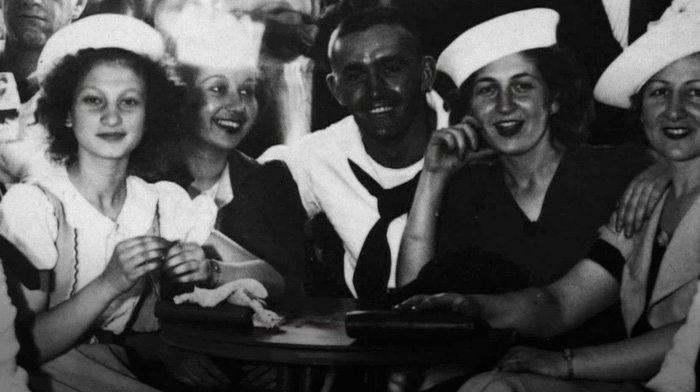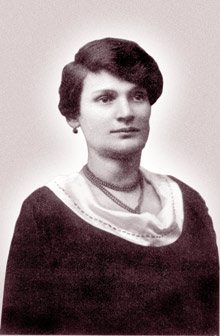Towards the end of the 19th century, the very sound of the name America had a magical effect on the millions of Jews in Eastern Europe, and they could not care less whether it was northern or southern America. For them, “America” was not a spot on the map, but a dream, a desirable destination, a place where Jews sleep on a bed made of money, and can even “eat an orange every day!”, as Isaac Bashevis Singer reported in his autobiography.
For a huge of Jewish women, though, the American experience was quite different. Rather than a safe haven or a heaven of oranges, they found horror and humiliation. One of the most shocking disgraceful criminal affairs in modern Jewish history, took place in Buenos Aires, Argentina.

Like in most affairs, it was all about the financial principal of supply and demand. Back then Argentina was becoming one of the most leading economies in the world and was even called “the world’s granary”, thanks to its successful striving agricultural industries. As a results, by the end of the 19th century, Argentina was full of immigrants, Jews included. In 1895 there were appr. 6,000 Jews living in Argentina, and less than two decades later, in 1914, there were already 117,000. The city of Buenos Aires grew in frantic rates, not only Jews were rushing in, but also many immigrants from all over the world. One interesting characteristic of the Jewish immigration to Bueno Aires, that affected our story a great deal, was the odd ration between the genders: almost ten times more men than women.
A group of corrupted Jews were more than willing demonstrate patriotism, and started to deliver the goods – literally. The growing demand for women led to the establishment of “Zvi Migdal” – a large powerful prostitution cartel established and owned by Jewish immigrants from Poland. Named after one of the founders, it was one of the largest networks in the South America, with branches and connections in Shanghai, Johannesburg, Rio de Janeiro and many other places. At the peak of their activity they had tens of thousands of women working for them, some 2,000 brothels and a state of the art organizational mechanism working efficiently according to cruel mafia codes.

The main wing was established in Buenos Aires, concealed as a charity society. They were called Ruffians (Spanish for pimps), they traded and abused and enslaved unsuspecting Jewish women, just for money. The cartel had an original marketing tactic: every once in a while a polite Jewish gentleman used to come to the Jewish communities in Eastern Europe and spread ads calling “Jewish girls from good homes” offering either jobs at homes of rich Jews in Buenos Aires, or marriage. Feminism was still at its beginning back then, and the career opportunities of young women were scarce, they usually could expect to be no more mothers and housewives – therefore they were easily tempted to respond to the ads.
While still on the ship to Argentina they were locked, beaten, raped and starved, which the Jewish pimps referred to as their “re-education”. The Ruffians called these trips “remonte”, a term from the cattle trade. Landing in Buenos Aires they were herded to a house where they had to undress and be inspected by pimps, who sold them in auctions as sex slaves. The “owners” – as well as customers – included officials, judges, and journalists.
The relations between the local Jewish community and the Ruffians were complicated. The local Jews called them “impure”, would not associate with them nor rent or sell them houses. However, the ruffians wished to participate in prayers and ceremonies, and assumed generous donations would easily pave their way into the community as distinguished members.

It worked for them – but only for a while. One night, Nahum Sorkin, a known Zionist, was standing outside the Jewish theater trying to stop from entering. Since then, the entire community started to condemn and denunciate the ruffians. They were no longer allowed in the synagogue nor in the cemetery. In response, the rich ruffians erected a fancy synagogue in the center of the Jewish quarter. The entrance floor was a glorious praying hall, while the upper floor was a brothel. During the synagogue’s inauguration the ruffians went outside with the Torah in their arms and circled the building, in front of the disgusted appalled neighbors who dared not interfere.
“Zvi Migdal” was active uninterruptedly for over four decades. The bosses were fearless, paying off every man who might jeopardize them: immigration officials, cops and judges that attempted to shut the cartel down; politicians; and city hall seniors who authorized the construction of the synagogue/brothel.
“Zvi Migdal” eventually fell thanks to the efforts of three: one Jewish prostitute, a police officer and a judge. In October 1922, Rachel Lea Liberman boarded the ship “Polania”, docking in Hamburg, with her two little boys. They were traveling to Buenos Aires, to join her husband Jacob Farber, a Jewish tailor who sailed to Argentina the previous year to look for a job. Their correspondence shows that Lea had high expectations from the new world across the sea. Nothing could prepare her for her bleak unfortunate fate. About a year after her arrival to Buenos Aires, her husband died of tuberculosis. Now she was a widow in a foreign country, mother of two, without a language and with no means of livelihood. Soon she had to sell her body.

Working for “Zvi Migdal” for several years, Lea managed to buy a house and to establish a small business. When she wished to resign and receive her share, the Zvi Migdal bosses tricked her into marring a charismatic stranger, who was in fact a mean violent sadist pimp, who forced her to work as a prostitute again.
Desperately – but also courageously – she turned to Julio Alsogaray, a police superintendent, known for his integrity and spotless measures. She presented him with evidences against the cartel’s bosses, which were carefully examined by the judge Dr. Rodriguez Ocampo, who did not succumb to the money and presents offered to him by the “Migdal” men.
The trial ended in September 1930, with 108 convictions, and long periods of imprisonment for all heads of the organization. After intensive public pressure, hundreds of Jewish pimps were imprisoned and deported to Uruguay. Towards the end of the 1930’s “Zvi Migdal” eventually ceased to exist altogether. The scars in the masses of hearts and bodies of young women were however irrecoverable forever.